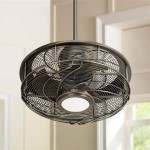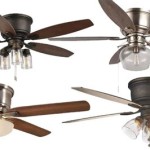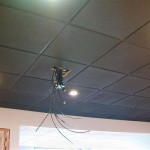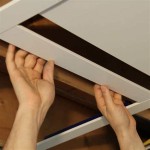How to Install Crown Molding on a Sloped Ceiling
Installing crown molding adds architectural detail and visual interest to any room. However, installing crown molding on a sloped ceiling presents unique challenges compared to a standard, flat ceiling. The angles involved require precise measurements, accurate cuts, and careful installation techniques. This article provides a comprehensive guide to installing crown molding on a sloped ceiling, ensuring a professional and aesthetically pleasing result.
Successful crown molding installation on a sloped ceiling hinges on understanding the geometry involved. Unlike right angles, which simplify the process, sloped ceilings introduce compound angles that need to be calculated and transferred to the molding for accurate cutting. This article will outline the tools and techniques necessary to tackle these complexities.
Planning and Preparation
Before commencing any installation work, thorough planning and preparation are crucial. This phase involves understanding the specific angles of the room, selecting the appropriate molding, gathering the necessary tools, and preparing the surfaces. Neglecting this preparatory work can lead to inaccuracies and ultimately compromise the final outcome.
The first step is to accurately measure the angles of the walls and the slope of the ceiling. A protractor or angle finder tool is essential for this task. Digital angle finders provide the most precise measurements, but a traditional protractor can suffice if used carefully. Measure the angle where the ceiling meets the wall for each corner. Note these angles as they will be used to determine the miter saw settings.
Next, determine the spring angle of the crown molding. The spring angle is the angle at which the molding sits against the wall and ceiling. This information is typically provided by the molding manufacturer. It is crucial to have this measurement before calculating the miter and bevel angles for cutting. If the spring angle is not known, a profile gauge can be used to trace the molding’s shape onto a piece of cardboard, allowing the angle to be measured.
Selecting the appropriate molding is also part of the preparation process. Crown molding comes in various materials, including wood, MDF (medium-density fiberboard), and polyurethane. Wood moldings offer a classic look and can be stained or painted, but they are more prone to warping and cracking than MDF. MDF is a cost-effective option that is less susceptible to moisture damage and warping. Polyurethane moldings are lightweight, easy to cut, and moisture-resistant, making them suitable for bathrooms and kitchens. Choose a molding material that complements the room’s style and suits the environment’s conditions.
Gathering the necessary tools is another essential step. The following tools are recommended for installing crown molding on a sloped ceiling:
- Miter saw: A miter saw with bevel capabilities is crucial for making accurate angled cuts.
- Coping saw: A coping saw is useful for creating coped joints, which are often used for inside corners.
- Nail gun: A nail gun, along with a compressor, makes securing the molding to the wall and ceiling much easier and faster.
- Wood glue: Wood glue provides extra bonding strength for joints.
- Measuring tape: An accurate measuring tape is essential for measuring lengths and angles.
- Level: A level ensures that the molding is installed straight and level.
- Stud finder: A stud finder helps locate wall studs for secure fastening.
- Caulk: Caulk is used to fill any gaps between the molding and the wall or ceiling.
- Wood filler: Wood filler is used to fill nail holes and imperfections in the molding.
- Safety glasses: Safety glasses protect the eyes from dust and debris.
- Ear protection: Ear protection reduces the noise from power tools.
Preparing the surfaces is the final step in the preparation phase. Ensure that the walls and ceiling are clean, dry, and free of any loose paint or debris. Fill any holes or imperfections with spackle and sand smooth. Prime the surfaces to provide a better bonding surface for the molding and caulk.
Cutting Crown Molding for Sloped Ceilings
Cutting crown molding for sloped ceilings requires a different approach than cutting for standard ceilings. The angles created by the sloped ceiling necessitate compound miter cuts, which involve adjusting both the miter angle and the bevel angle of the miter saw. Understanding how to calculate and set these angles is essential for achieving seamless joints.
Instead of relying on trial and error, using online calculators or miter saw angle charts specifically designed for sloped ceilings is highly recommended. These tools require inputting the wall angle and the spring angle of the molding and then output the correct miter and bevel settings for both inside and outside corners. These calculators eliminate much of the guesswork and significantly improve accuracy.
For inside corners, the molding pieces meet at an angle pointing inwards. The miter saw settings for inside corners will be different from those for outside corners. Generally, inside corners are coped as this produces a more durable and visually appealing joint. Coping involves cutting one piece of molding square and then using a coping saw to remove the back of the other piece, leaving only the front profile. This allows the coped piece to fit snugly against the square-cut piece, compensating for any slight imperfections in the wall angle. A coping saw is indispensable for creating accurate coped joints.
Outside corners, where the molding pieces meet at an angle pointing outwards, require a different approach. The miter saw settings for outside corners are directly determined by calculations or angle charts. Ensure the molding is held firmly against the fence and table of the miter saw during cutting to avoid any slipping or movement. Practice on scrap pieces of molding to fine-tune the miter and bevel settings before cutting the actual pieces.
For walls that are not perfectly square, adjustments to the miter saw settings may be necessary. If the wall angle is slightly off, the resulting joint may have a gap. To correct this, adjust the miter angle slightly to compensate for the imperfection. This may require some experimentation and adjustment, but it is essential for achieving a tight, seamless joint.
When cutting long lengths of crown molding, provide adequate support for the molding on both sides of the miter saw. Long pieces of molding can be unwieldy and prone to bending or warping, which can affect the accuracy of the cut. Use roller stands or outfeed tables to support the molding and keep it stable during cutting.
Installation Techniques
Once the crown molding has been cut, the next step is to install it on the sloped ceiling. Proper installation techniques are essential for ensuring that the molding is securely attached and that the finished result is aesthetically pleasing. This involves using a nail gun to fasten the molding to the wall studs and ceiling joists, applying wood glue to the joints for added strength, and using caulk and wood filler to conceal any imperfections.
Start by locating the wall studs and ceiling joists using a stud finder. Mark the locations of the studs and joists on the wall and ceiling using a pencil. This will provide a reference for where to nail the molding. It is crucial to nail into solid wood to ensure that the molding is securely attached and does not come loose over time.
Apply a bead of construction adhesive to the back of the molding before attaching it to the wall and ceiling. Construction adhesive provides extra bonding strength and helps to fill any gaps between the molding and the surfaces. Position the molding carefully and align it with the marked stud and joist locations. Use a nail gun to drive nails through the molding and into the studs and joists. Space the nails approximately every 12 to 16 inches. Take care not to overdrive the nails, as this can damage the molding.
When installing the molding around corners, apply wood glue to the joints before connecting the pieces. Wood glue will provide extra strength and prevent the joints from separating over time. Clamp the pieces together until the glue has dried completely. This will ensure a tight, seamless joint.
After the molding has been installed, inspect it for any gaps or imperfections. Use caulk to fill any gaps between the molding and the wall or ceiling. Apply the caulk smoothly and evenly, and wipe away any excess with a damp cloth. Use wood filler to fill any nail holes or imperfections in the molding. Sand the wood filler smooth after it has dried.
Finally, paint or stain the molding to match the room’s décor. Apply a primer before painting or staining to ensure that the finish adheres properly. Use multiple coats of paint or stain for a richer, more durable finish. Allow the paint or stain to dry completely before handling the molding.
Installing crown molding on a sloped ceiling requires patience, precision, and attention to detail. By following these guidelines, anyone can achieve a professional-looking result and add architectural elegance to their home. Proper planning and preparation, accurate cutting techniques, and careful installation methods are the keys to success.

Installing Crown Moulding Part Two Canadian Woodworking

Installing Crown Moulding On A Sloped Ceiling Doityourself Com Community Forums

Crown Moulding On Angled Ceiling Sawdust Girl

Installing Crown Moulding On A Sloped Ceiling

Installing Crown Moulding Part Two Canadian Woodworking

Crown Molding On Angled Ceilings Makely

Installing Crown Moulding On A Sloped Ceiling Doityourself Com Community Forums

Crown Moulding On Angled Ceiling Sawdust Girl

Installing Crown Molding Around A Cathedral Ceiling Fine Homebuilding

How To Install Crown Molding On Vaulted Or Cathedral Ceilings The Joy Of Moldings
Related Posts








